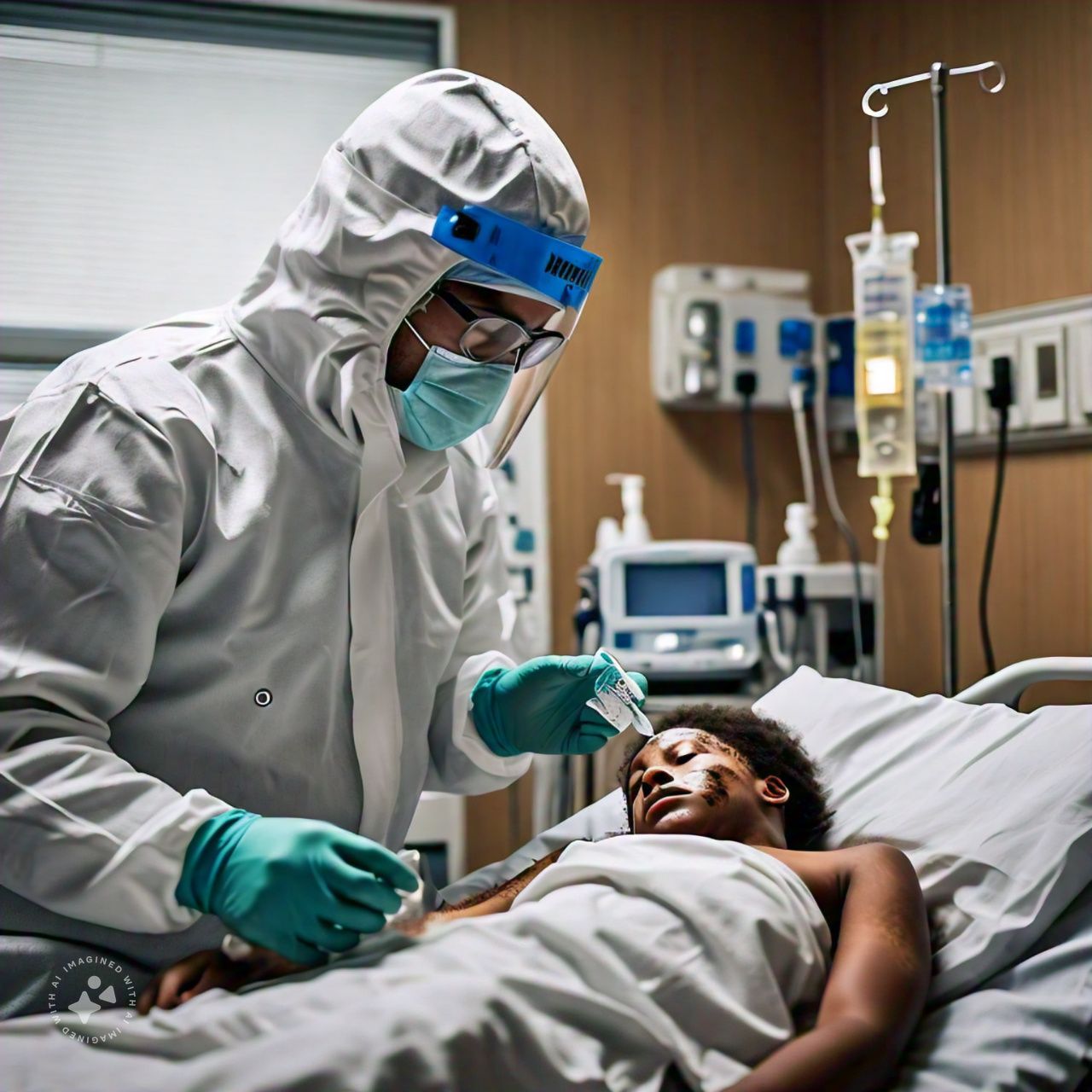Mpox (formerly known as monkeypox) is a viral disease caused by the monkeypox virus, which belongs to the Orthopoxvirus genus, the same family as smallpox. It has garnered global attention due to its potential for human-to-human transmission and outbreaks outside of its traditional endemic regions in Africa.
Here's an overview of the key aspects of Mpox:
1. History and Background
First Identified: Mpox was first identified in 1958 when outbreaks of a pox-like disease occurred in monkeys kept for research, hence the name "monkeypox." The first human case was recorded in 1970 in the Democratic Republic of Congo (DRC).
Endemic Regions: Mpox is endemic in parts of Central and West Africa, particularly in forested regions of countries like the DRC, Nigeria, and Cameroon. Outbreaks in other countries have been linked to international travel or animal importation.
2. Transmission
Animal to Human (Zoonotic): Mpox primarily spreads from animals to humans. The natural hosts are likely small mammals (such as rodents), although it was first found in monkeys. Transmission can occur through contact with infected animals via bites, scratches, or handling infected animals or animal products.
Human to Human: Human-to-human transmission can occur through direct contact with infected bodily fluids, respiratory droplets, or contaminated objects (like bedding). Close personal contact, including sexual activity, has been identified as a significant route of transmission in recent outbreaks.
3. Symptoms
Incubation Period: The incubation period typically ranges from 5 to 21 days, with most cases developing symptoms around 7 to 14 days after exposure.
Stages of Illness:
Initial Symptoms (Prodromal Stage): Fever, headache, muscle aches, back pain, swollen lymph nodes, chills, and exhaustion. Swollen lymph nodes are a distinguishing feature compared to other similar diseases like chickenpox or smallpox.
Rash Development: Within 1 to 3 days after the onset of fever, a rash typically develops. It starts as macules (flat lesions) and progresses to papules (raised bumps), vesicles (fluid-filled blisters), pustules (pus-filled lesions), and finally crusts, which fall off.
The rash often begins on the face and spreads to other parts of the body, including the palms, soles, and mucous membranes. Lesions may be painful but become itchy as they heal.
4. Severity and Outcomes
Severity: Most cases are mild and self-limiting, lasting 2 to 4 weeks, but severe cases can occur, especially in immunocompromised individuals, children, or those with underlying health conditions.
Case Fatality Rate (CFR): The CFR varies by strain:
Central African Clade (Congo Basin): Historically has a higher CFR (up to 10%).
West African Clade: Has a lower CFR (around 1-3%), which is the strain more commonly associated with recent global outbreaks.
5. Diagnosis
Laboratory Testing: Diagnosis is confirmed through laboratory tests, such as polymerase chain reaction (PCR), which detects the virus in samples taken from skin lesions or respiratory swabs.
Differential Diagnosis: Mpox can be confused with other rash-producing illnesses like chickenpox, smallpox, and even certain sexually transmitted infections (STIs), making accurate testing crucial.
6. Treatment
Supportive Care: Most patients recover with supportive care, including managing symptoms like fever and pain, and ensuring proper hydration.
Antivirals: Tecovirimat (TPOXX), an antiviral medication originally developed for smallpox, has been used under expanded access or emergency use protocols to treat severe mpox cases, although formal approval for mpox treatment is still being researched.
Vaccination:
JYNNEOS (Imvamune or Imvanex): A vaccine developed for smallpox and monkeypox, approved for both prevention and post-exposure prophylaxis.
ACAM2000: Another smallpox vaccine that can be used for monkeypox but has more side effects and is generally reserved for higher-risk populations.
7. Prevention
Vaccination: Vaccination campaigns are recommended for high-risk groups, such as healthcare workers, laboratory personnel, and those who have been in close contact with infected individuals.
Avoiding Animal Contact: In endemic areas, avoiding contact with wild animals, especially rodents and primates, is crucial.
Personal Protective Measures: These include hand hygiene, avoiding contact with infected individuals or contaminated materials, and using personal protective equipment (PPE) when caring for someone infected.
8. Global Outbreaks and Public Health Response
In 2022, a significant global outbreak of mpox occurred, with cases reported in countries outside the traditionally endemic regions, such as Europe, North America, and Asia. This raised concerns about the virus's spread, especially in urban settings and among networks involving close contact.
WHO Declaration: The World Health Organization declared mpox a Public Health Emergency of International Concern (PHEIC) in July 2022 due to the unusual spread and increasing case counts globally.
Response Measures: Countries have implemented measures such as contact tracing, isolation of cases, vaccination strategies for high-risk groups, and public health education campaigns to contain the spread.
9. Public Health Recommendations
Isolation: Individuals with confirmed or suspected mpox should be isolated until their lesions have fully healed.
Quarantine: Close contacts should monitor for symptoms and may be offered post-exposure vaccination.
Education and Awareness: Public health efforts emphasize understanding symptoms, transmission routes, and prevention strategies, especially in at-risk communities.
10. Outlook and Research
Epidemiology: Ongoing research is needed to better understand the changing epidemiology of mpox, particularly as the virus emerges in non-endemic areas.
Vaccine Development: Efforts to improve and expand the availability of vaccines like JYNNEOS and to develop new antiviral treatments are continuing.
Public Health Preparedness: Global surveillance and preparedness efforts are essential to prevent future outbreaks and improve rapid response to emerging zoonotic diseases like mpox.
Mpox serves as a reminder of the importance of global health surveillance, zoonotic disease monitoring, and the need for robust public health infrastructure to quickly respond to emerging infectious diseases.
